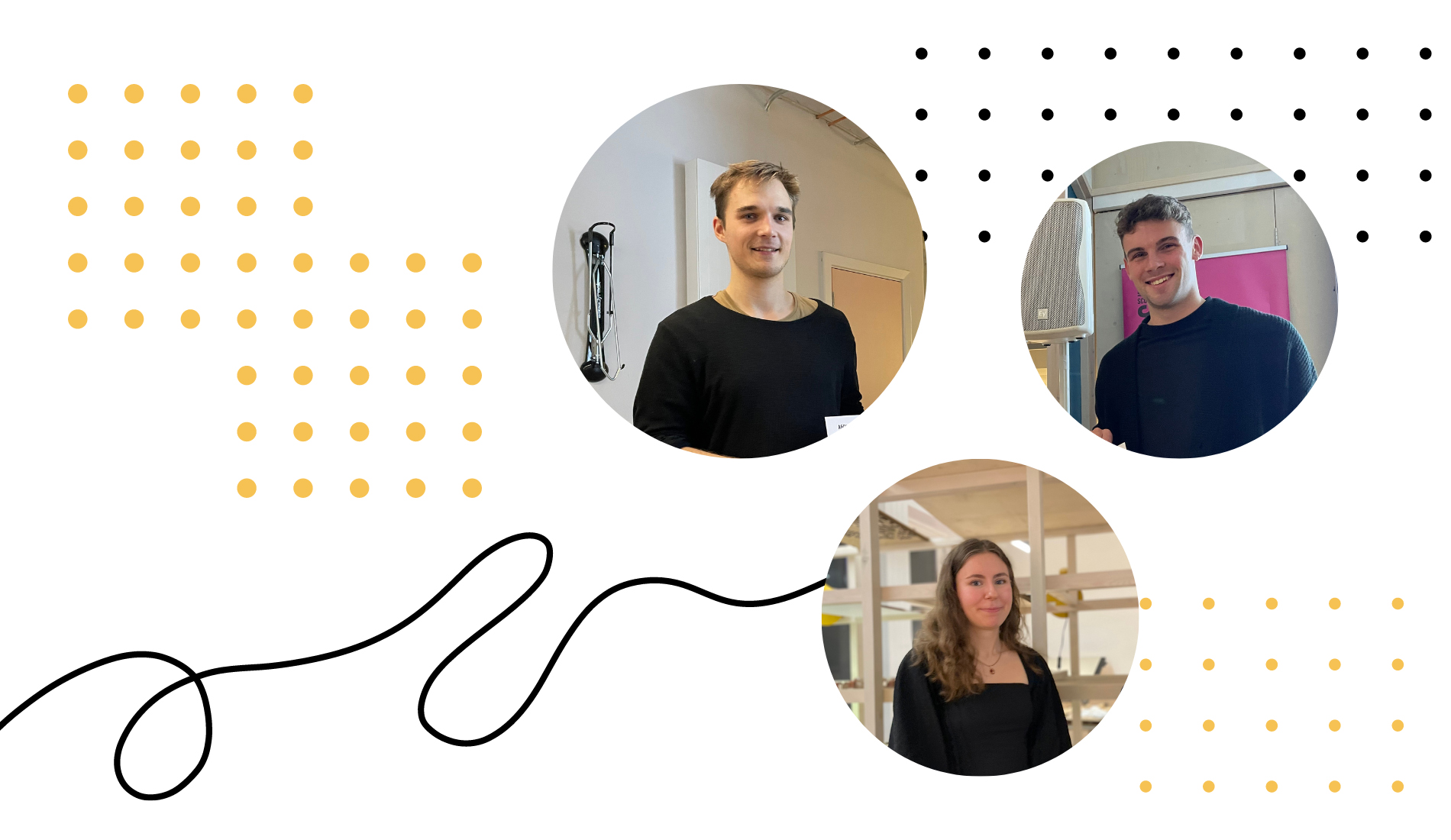A&DS and RIAS Scottish Student Awards for Architecture 2022: interviews

We caught up with the three students after the award ceremony and asked them about their award-winning projects for this year’s A&DS and RIAS Scottish Student Awards for Architecture.
The winning projects at the 2022 Architecture and Design Scotland and Royal Incorporation of Architects in Scotland Scottish Student Awards for Architecture included ideas on tackling the climate emergency through reusing materials, public housing development and responding to urban sprawl.
We interviewed three of the students after the award ceremony at Collective Architecture to find out what they had to say about their award-winning projects. Click on the links below to navigate to the selected interview:
What inspired you to create this project?
My project explores how Glasgow as a city has dealt with many of its problems by demolishing things and rebuilding them. It’s sort of quite an easy way out and I wanted to reflect on that.
What are the aims of this project?
The aim of the project was just to explore how far I can take and create something architecturally interesting without using that many raw virgin materials.
Demolished or soon-to-be demolished sites around Glasgow catalogued different building elements and materials and I just wanted to see how far I could go with that.
And that was the aim. Showing how much you still can do with the things you already have around you.
What was the biggest challenge you experienced whilst creating this project?
Well, the challenge is to do with using what's already there. It's hard to get access to these sites, especially as a student.
I had to choose a site that was quite derelict as that was the aim, to choose a derelict site. It’s always guarded, and I had to peek through the fence and try to understand what was happening there and how you could improve it.
And the same with cataloguing demolished buildings and going through demolition companies, websites, and services, trying to understand these things. And having worked in practice, that's sort of how you get to start as well.
Well, no one gets access to everything immediately anyway. So that's how you go about things, by just being curious.
Why do you think sustainability is important in the architecture industry?
The built environment has such a massive impact on our carbon footprint and the environment we build around.
So, it's just undeniably the way how we build buildings and the cities around us which are inevitably impacted. And so, sustainability outcomes of modern societies just go hand-in-hand.
What inspired you to create this project?
I'm really interested in looking at this sort of site where social housing masterplans have been imposed and what works about them. The good ideas that they have in theory about giving affordable housing and community spaces.
Maybe it’s not working in practice anymore. I wanted to look at what can be done with these spaces and how they can be socially regenerated.
What were the aims of your project?
I was sort of focussing on designing a project from a technical as well as environmental and social standpoint. Combining these by thinking about building in layers and how these layers can be configured over time and how they may change. And to look at the environmental impact of each layer and how long it may last.
So, I think about this from an environmental and social point of view, how a community space changes over time.
What was the biggest challenge of the project?
It was definitely, focussing more on the technical aspects for the first time, properly planning out details, how that influences the expression of the building, working closely with materials and looking at the carbon footprint.
But I think having worked before in practice I was able to do better than before in my last year on technical details and everything else.
Why did you decide to study architecture?
I think it's because I'm interested in doing a job that has social implications. I'm really interested in science or building technology, but I like that architecture has the potential to engage with more social issues. So yeah, that's what excites me about it!
What inspired you to create this project?
Before Covid, a lot of our projects were abroad. This time our project was in Blairgowrie. I found it really interesting to work in a Scottish town that I could actually relate to.
Being from Dunfermline, which is quite similar in scale and seeing the problems they had, allowed me to apply them to a project at university and that was great.
What was the biggest challenge of the project?
I studied architecture, so I was used to designing buildings. The project I did was on a much wider scale, a whole town scale. So, I went from doing a building to looking at a whole town.
It was really challenging, but it was very refreshing and something I enjoyed.
Why do you think urban design is important in architecture?
Buildings can’t really be successful without the urban design part of it. That’s where street life happens, and buildings thrive off of that. So, if you can make beautiful urban spaces then the buildings are going to prosper from that.
